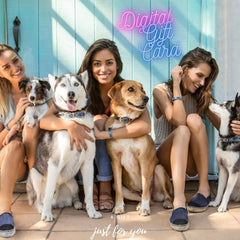Learn To Understand 8 Dog Body Language Styles
Our canine friends don't speak in words, but that doesn't mean they can't communicate! Dogs have a unique method of communication – through their body language. Whether they are happy, anxious, angry, or sad, body language gives humans clues to their emotional state.
Acts like tail wagging, jumping, or bringing a favorite toy; all have a meaning behind them. Being a responsible pet owner, you should have ample knowledge about a dog's body language and how to interpret it.
Otherwise, you and your dog will end up frustrated. Besides, learning to understand your dog will strengthen your relationship and quicken the training process.
Want to pick up tips on how to understand dog body language style? Continue reading to find 8 common body language styles and their meaning.
The Basics of Body Language
The first and foremost thing is to understand that dogs use body language as the main source of communication. Although they use their bark to communicate with other dogs and pet owners, body language is the key source of expressing their feelings.
Commonly, they use the body parts like the face, ears, tail, tongue, and teeth for communication. Let us see how and when our dogs use these body parts:
- Face– whenever you see some wrinkles on your dog's forehead, understand that it is confused – just like us humans!
- Ears- Whenever you see that your dog has raised ears, it means that your furry friend is listening carefully.
- Eyes- dogs commonly light up their eyes when they consider someone as their friend. This happens when they see another friend or their owner. However, when they are afraid or confused, their pupils start dilating.
- Tail- just like other body parts, wagging of the tail also indicates a lot of emotions. You need to notice the direction of the tail. If your dog is wagging its tail towards the right more, then things are good, and the dog is satisfied. However, if the tail is wagging more on the left side, it is indicating negative emotions.
- Lips, Teeth, and Tongue- You will be surprised to know how dogs smile. They smile in the same way as humans do. Yes, they show their teeth and move their lips backward. Dogs use this smile to show happiness in front of their owner. They do not use this gesture for communicating with other dogs.
Now, let us move towards the behavioral cues that we can get from the rest of the body. These are:
1. Happy and Relaxed Dog Body Language

How to know that your dog is happy? Look out for the following bodily features:
- Mouth open
- Tongue slightly exposed
- Tail relaxed and down or wagging in a long and slow motion
- High head
- Ears up
- Soft eyes
If you notice these signs, it means that your dog is happy and relaxed - it is the best time to approach your furry friend. Trainers wait for this relaxed posture for a training session. In this posture, dogs are not aggravated by things in their surroundings, and they are on their best behavior.
Some dog breeds are happier than others; according to We Love Doodles, a site dedicated to doodles of all kinds, most doodle breeds, toy spaniels, Maltese, and beagles are among the dogs that are considered happiest on the planet.
On the other hand, mastiffs, bulldogs, and Jack Russell terriers are often considered the grumpiest dogs. Therefore, your dogs are more likely to display a happy & relaxed body language depending on their breed.
2. Aggressive and Dominant Dog Body Language
Dogs are fearless creatures, and they are not afraid to show aggression and dominance. How can you tell when your dog is displaying aggression and dominance?
- Ears in the forward position and sometimes slightly on the side
- Lips are curled
- Slight wrinkles on the nose
- Raised tail
- Open mouth, and sometimes it is open just from the corner
- Some wrinkles on the forehead
- Teeth are visible
Dogs show dominance when they perceive a challenge. Therefore it is an alarming sign for pet owners. Here, it is important to calm down your dog. You can do so by showing love to make the little friend realize that things are normal. Additionally, it shows that your dog is aware of what is happening in the surrounding, which is a good thing.
3. Stressed Dog Body Language

As a dog lover, I hate to see one in distress. If a pet owner doesn't know when their dog is stressed or nervous, how will they help? Here are a few body language styles to help you pick the clues:
- Tail down
- Sweats
- Backward ear position
- The lower position of the body
- Dilated eye pupils
These traits show that the dog is under environmental pressure. Many untrained dogs that are taken for a walk often exhibit these features. However, they gradually become accustomed to the environment with frequent training, and the stress goes away.
A stressed dog will often lick themselves (self-groom) exaggeratedly. They may yawn, scratch themselves, shake their body, look away, and display slow movements.
4. Alert Dog Body Language
Dog owners who get dogs for guard duty will be pleased to know when a dog is alert and attentive. Here is how you can tell an alert dog from an inattentive one:
- Eyes widely open
- Mouth is closed
- The nose is smooth without wrinkles
- The forehead has no wrinkles
- Horizontal tail with no stiffness or bristles
The above traits indicate that your dog is now attentive and fully alert. When teaching a new training lesson to your dog, be sure that it is displaying alert behavior.
5. Worried and Fearful Dog Body Language

If your dog is worried, you better be concerned. Here is how you can tell if your dog is fearful or worried:
- Short eye contact or resistance in eye contact (just like humans)
- The forehead has no wrinkles
- Ears are forward
- The mouth shows a back position from the corner
- Slight wagging of the tail along with down position
- The body is lowered down
- Sweaty appearance or sweaty footprints
- Licking of other dogs
These signs show that the dog is not ready for a conflict. It is a signal that it is in a fearful state where it perceives something strange and scared. Do not force your dog for anything in this scenario. Change the surroundings and let the dog calm down. Most often, dogs display worried behavior when there is something strange or new in the environment.
6. Playful Dog Body Language
Pet owners and their children are always eager to play with their dogs. How to know that your dog is in a playful mood?
- Exposed tongue with an open mouth
- Dilated pupils
- Broadly waving of the tail in an upward direction
If you notice these signs, understand that you are getting an invitation to play. These features might come along with some excited barks. So, gather your favorite toy and get ready to have some quality time with your loved one.
7. Submissive Dog Body Language

If you are unsure when your dog is in a submissive mood. Read below to find out:
- Curled up or lowered body
- Licking of other dogs
- Ears are back
- Avoids eye contact
- Belly is up
Understand that your pet is showing respect and being obedient with these signals. Just like us, dogs also lower their gaze for giving respect to their owners.
8. ‘Need Space’ Dog Body Language
Though dogs need a lot of attention and compassion, they also need some space. Dedicate a separate space for your new pet to sleep and have some rest. These are the signals that can tell when your dog needs space:
- Body leans away
- Raised paws
- Head moves away from the owner
- Closed mouth
- No eye contact with strangers
If you see these signals, take no time in taking your furry friend to bed.
Now You Are Ready to Interpret Your Dog's Body Language
In short, dealing with our canine friends becomes easier if we understand their body language. Thankfully, they communicate much like humans. Some key body parts that can reveal useful information about the dog include its tail, eye, ears, tongue, teeth, and mouth.
Furthermore, notice how your pet barking is and showing traces of sweats. It might take some time, but once you learn about the body language styles, you will find it easier to know what your pet desires.
Guest Post by: Arslan Hassan
Author Bio:
Arslan Hassan is an electrical engineer with a passion for writing, designing, and anything tech-related. His educational background in the technical field has given him the edge to write on many topics. He occasionally writes blog articles for Dynamologic Solutions.


